Inside Switzerland’s giant water battery
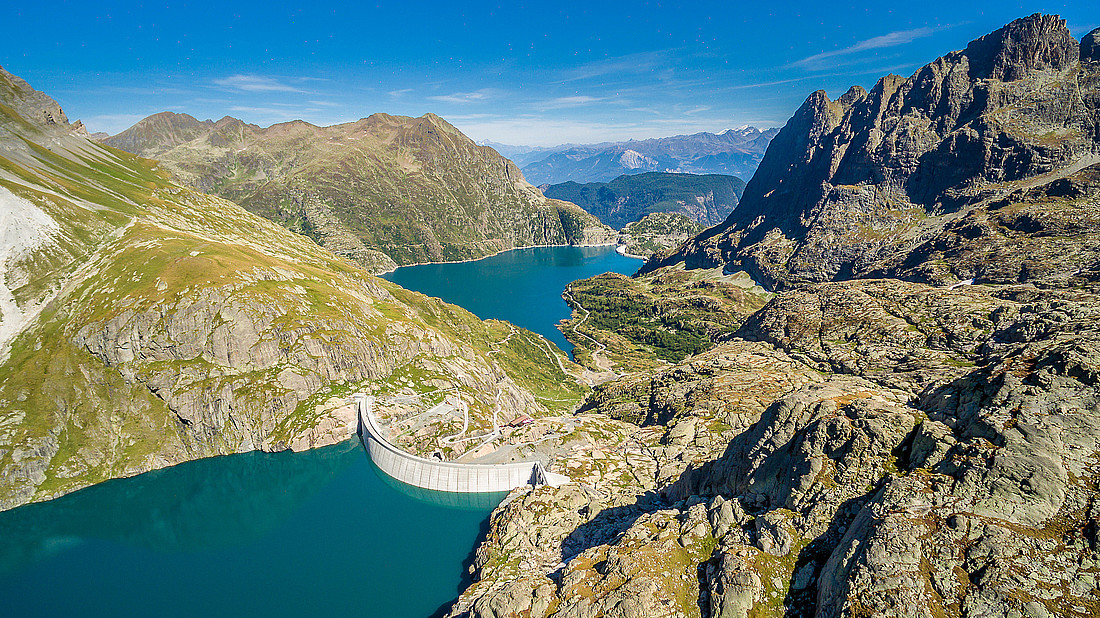
A new pumped-storage station in one of the highest and remotest parts of Switzerland will help cope with fluctuations in wind and solar-power supply. It can stabilise electricity output for the whole of Europe.
“The electric storage capacity of the reservoir surpasses that of 400,000 electric car batteries,” explains Alain Sauthier, engineer and director of the Nant de Drance pumped-storage hydroelectric plant, pointing towards the Vieux Emosson reservoir. This artificial lake was built in 1955 in the municipality of Finhaut, high in the Alps of the Swiss canton of Valais.
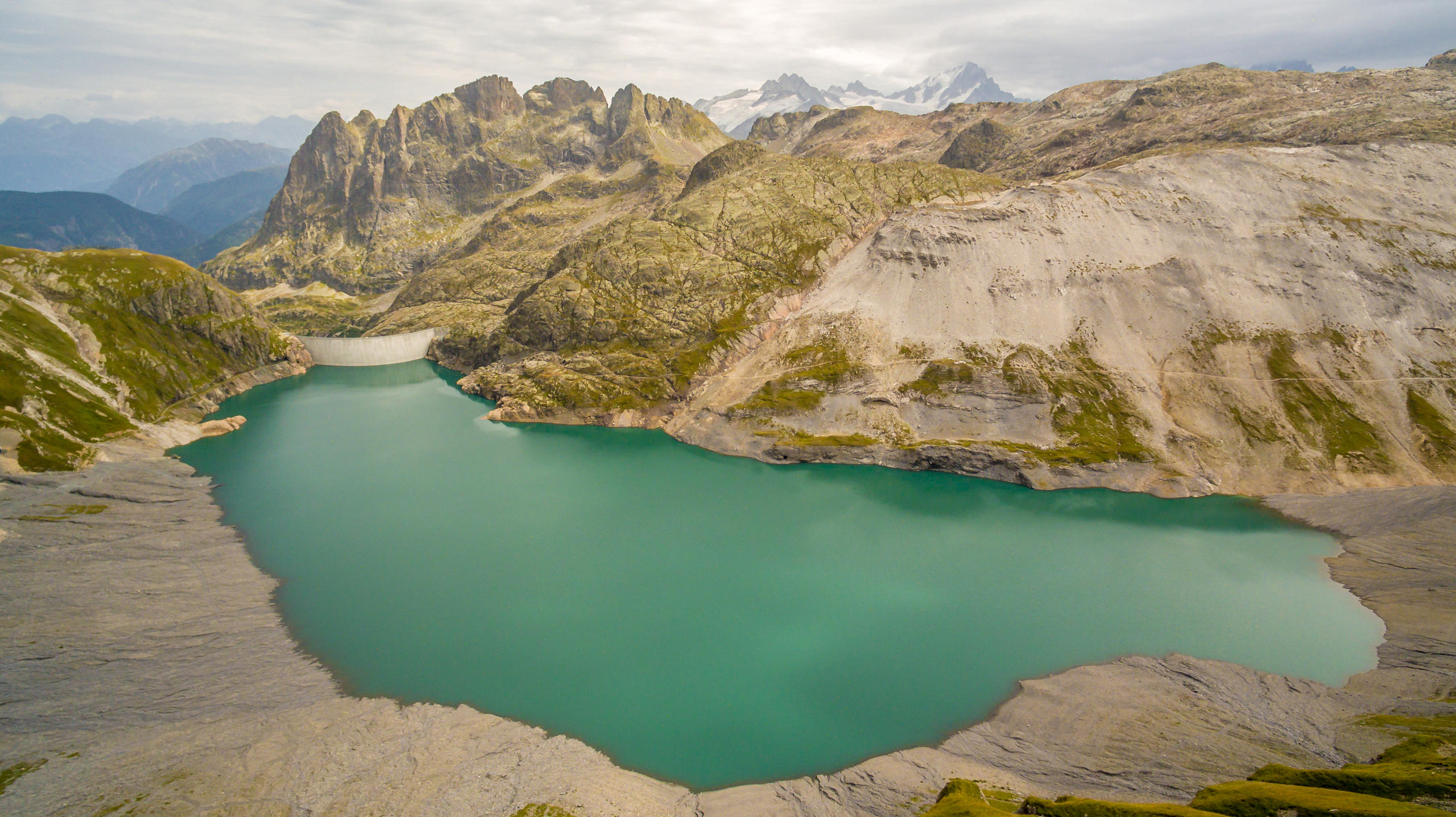
We are standing 2,225 metres above sea level, and Sauthier is about to show us how one of the most powerful “water-based electric batteries” in Europe functions.
The plant operates using two reservoirs, an upper one and a lower one. The water stored in the higher-altitude Vieux Emosson reservoir is released to produce electricity during peak hours. From the Emosson reservoir some 300 metres downstream, the water is then pumped upwards again and stored in times of energy overproduction.
“It is an ecological battery that uses the same water over and over. The output is more than 80%: for every kilowatt hour of electricity used to pump the water upstream, 0.8 is fed into the grid,” Sauthier explains.
Watch the following short video for a 3D view of the plant:
Between 2012 and 2016, the height of the Vieux Emosson dam was raised by some 20 metres to increase the reservoir’s capacity and thus store more energy, the plant’s director details.
“In the future, it will be increasingly necessary to store large amounts of electricity, as renewable sources gradually replace nuclear and fossil energy.” However, as he points out, solar and wind power are volatile sources that do not necessarily generate electricity when it is needed. This is why systems such as this one are so important, to be able to store energy and keep the grid stable.
Discover how the water battery works in this film:
Leaning Tower of Pisa in the Alps
From the Vieux Emosson dam we enter the mountainside through a metal doorway in the rock. Sauthier is taking us into the pulsing heart of the plant, the engine room.
As we drive down one of the underground galleries, he outlines the logistical and engineering challenges encountered in achieving one of the largest infrastructure projects in Switzerland since the turn of the millennium. 18 km of tunnels were cut into the Valais Alps. Hundreds of heavy vehicles plied along the main one, transporting all the material and equipment into the mountain, from prefabricated buildings with offices to ball valves weighing over 100 tons.
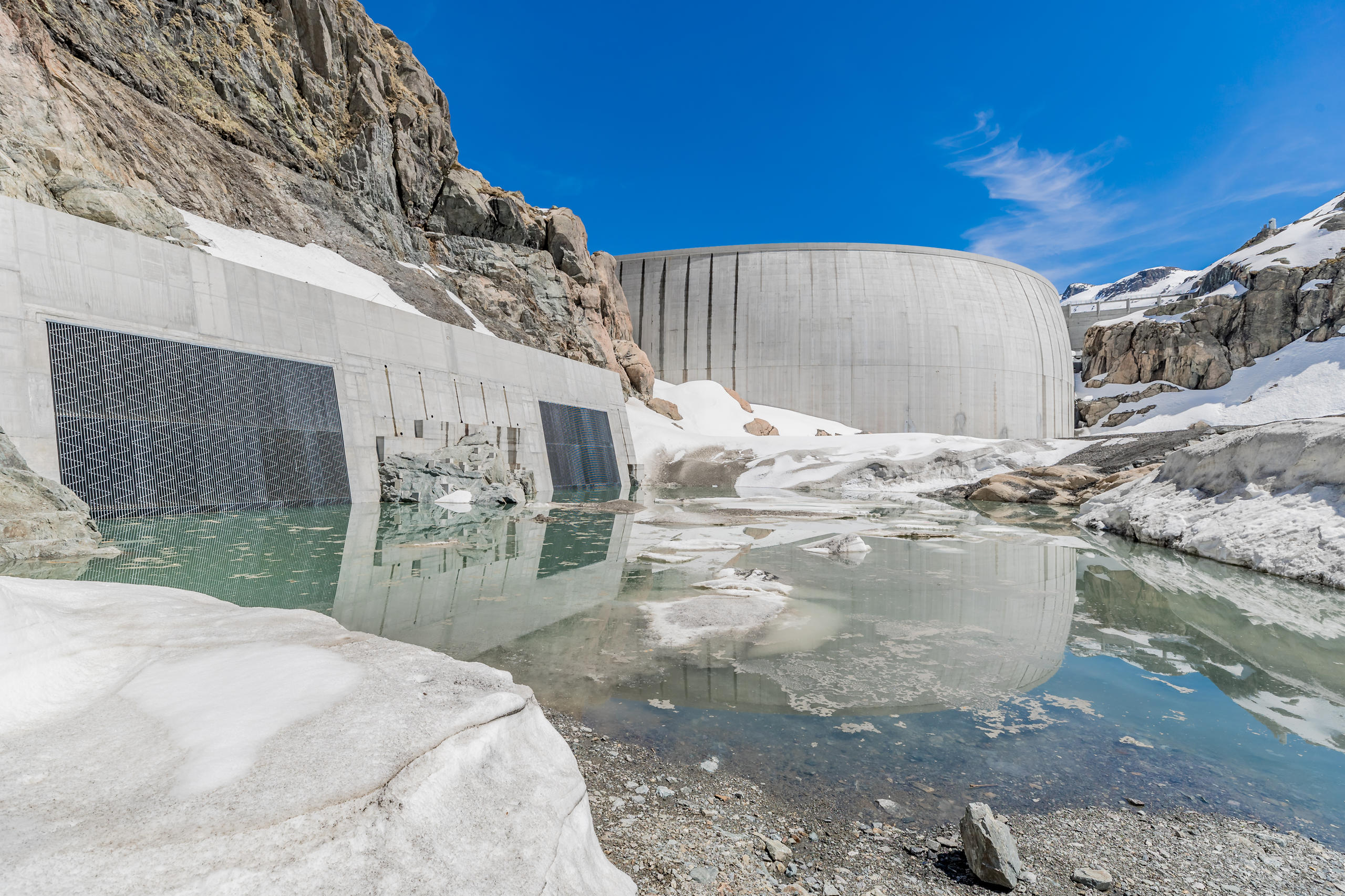
After travelling several kilometres down a damp and dark tunnel, and with 600 metres of bedrock above our heads, we reach the cavernous engine room. Nearly 200 metres long and 32 metres wide, the chamber was initially 52 metres high. “We could have fitted the Leaning Tower of Pisa in here!” Sauthier exclaims. Today, some of the space is occupied by the concrete structures containing the pump-turbines, but the dimensions remain breathtaking.
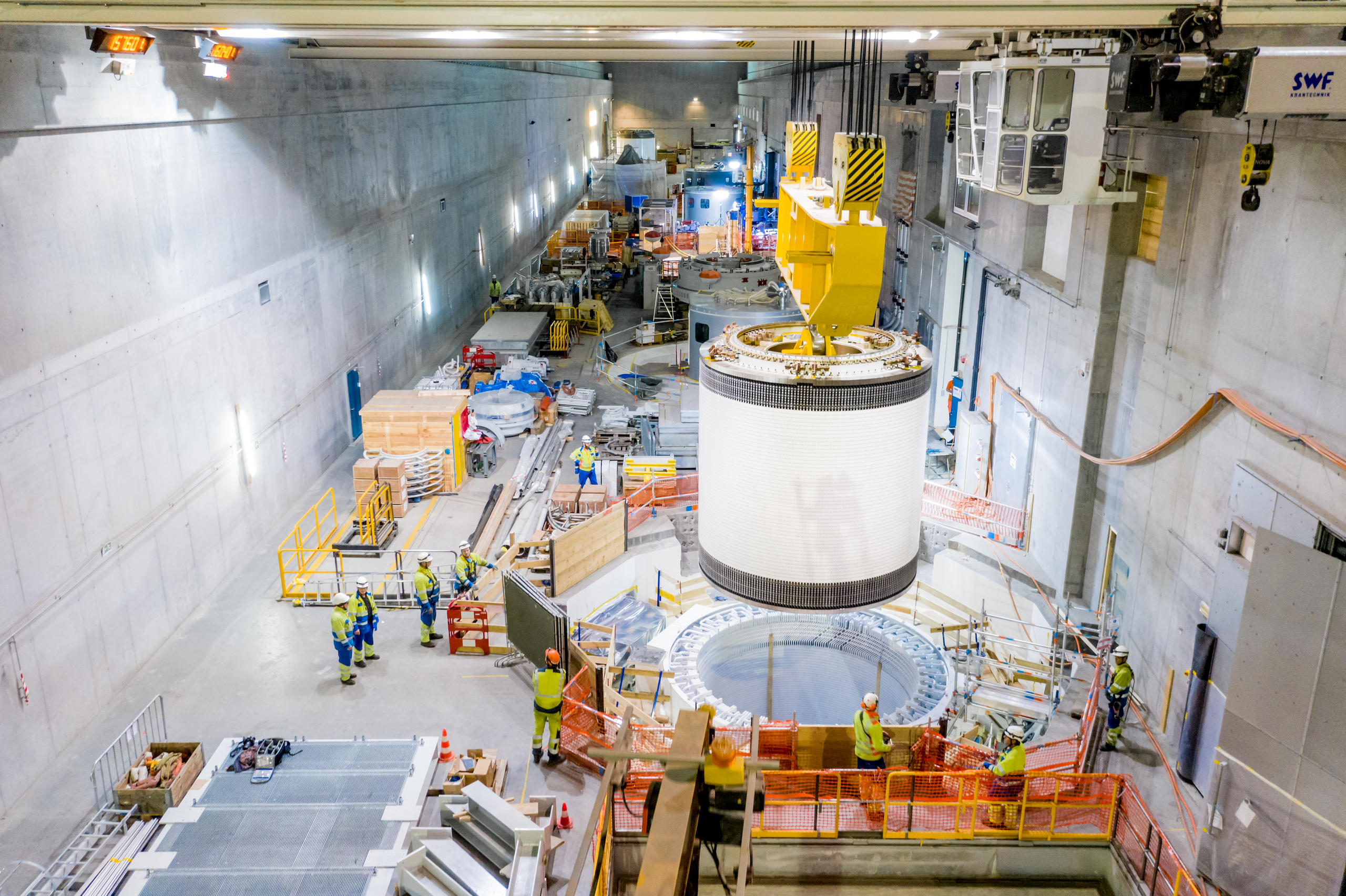
Too big for Switzerland
With a capacity of 900 megawatts, Nant de Drance is one of the most powerful plants in Europe, together with the one in Linthal in the canton of Glarus (1,000 MW).
Sauthier is especially proud of the six pump-turbines, which are almost unique in the world in terms of their sheer size and the technology used. “In less than ten minutes we can reverse the direction of rotation of the turbines and switch from electricity production to storage. Such flexibility is key in order to react promptly to the needs of the electricity grid and adapt electricity generation and consumption. Otherwise, you risk a collapse of the grid and blackout, as happened in Texas at the beginning of the year.”
The plant is vital in order to guarantee electricity supply and grid stability, “but it is far too big for Switzerland”, according to the engineer. “It can play a role in stabilizing the grid at European level. We are geographically at the heart of the continent and energy flows pass through Switzerland. If there is an overproduction of wind power in Germany, we can use the surplus electricity to pump and store water.”
616,000 potential sites worldwide
In the future, pumped-storage power stations will enable the storage of ever greater amounts of green electricity, for release later in times of shortage, writes the Association of Swiss Electricity Companies. “Thanks to its power plants, Switzerland can help balance irregularities in electricity production in Europe. However, we should not overestimate their role, which above all depends directly on the capacities of existing lines,” the association adds.
“Pumped-storage hydro-power is a mature technology,” says Benoît Revaz of the Swiss Federal Office of Energy. More progress is needed however, he believes, to make the system more flexible compared with current operating conditions. Together with 11 other countries, Switzerland is taking part in an international forum aimed at reinvigorating the development of pumped hydro-storage in electricity markets.
According to Matthew Stocks of the Australian National University, there are 616,000 sites around the world where closed-circuit hydro-pumping plants with two reservoirs could be built. It would suffice to build just 1% of these to solve all problems linked to the storage of intermittent energies, says the researcher, who bases his assessment on purely geographical considerations.
Reacting quickly to prices
Beyond the potential, the Nant de Drance power plant, which is owned by a company led by electricity producer Alpiq and Swiss Federal Railways, will obviously have to make the numbers add up. This is no easy feat in a sector that has had to contend with financial difficulties and the unpredictability of the electricity market in recent years.
“We are working on the price differential: we need to react quickly and pump when the price is low and turbine when it is high. In the past, we used the turbines by day and pumped by night, but now the situation has changed, with consumption peaking late in the evening,” the plant’s director says.
Nant de Drance will be fully operational for commercial production by summer 2022. Its owners hope it will become profitable once nuclear power plants have finally been shut down and when renewable energy sources have taken over from fossil fuels.
The symposium taking place in Winterthur on 2-3 September 2021 will bring together players from the public and private sectors to discuss the challenges and solutions involved in achieving the United Nations’ Sustainable Development Goals. Renewable energies and the supply of raw materials are among the main topics of this year’s event.
As media partner, SWI swissinfo.ch is co-organizing and moderating a forum on effective and sustainable communication, which will include a presentation on solutions journalism.

In compliance with the JTI standards
More: SWI swissinfo.ch certified by the Journalism Trust Initiative


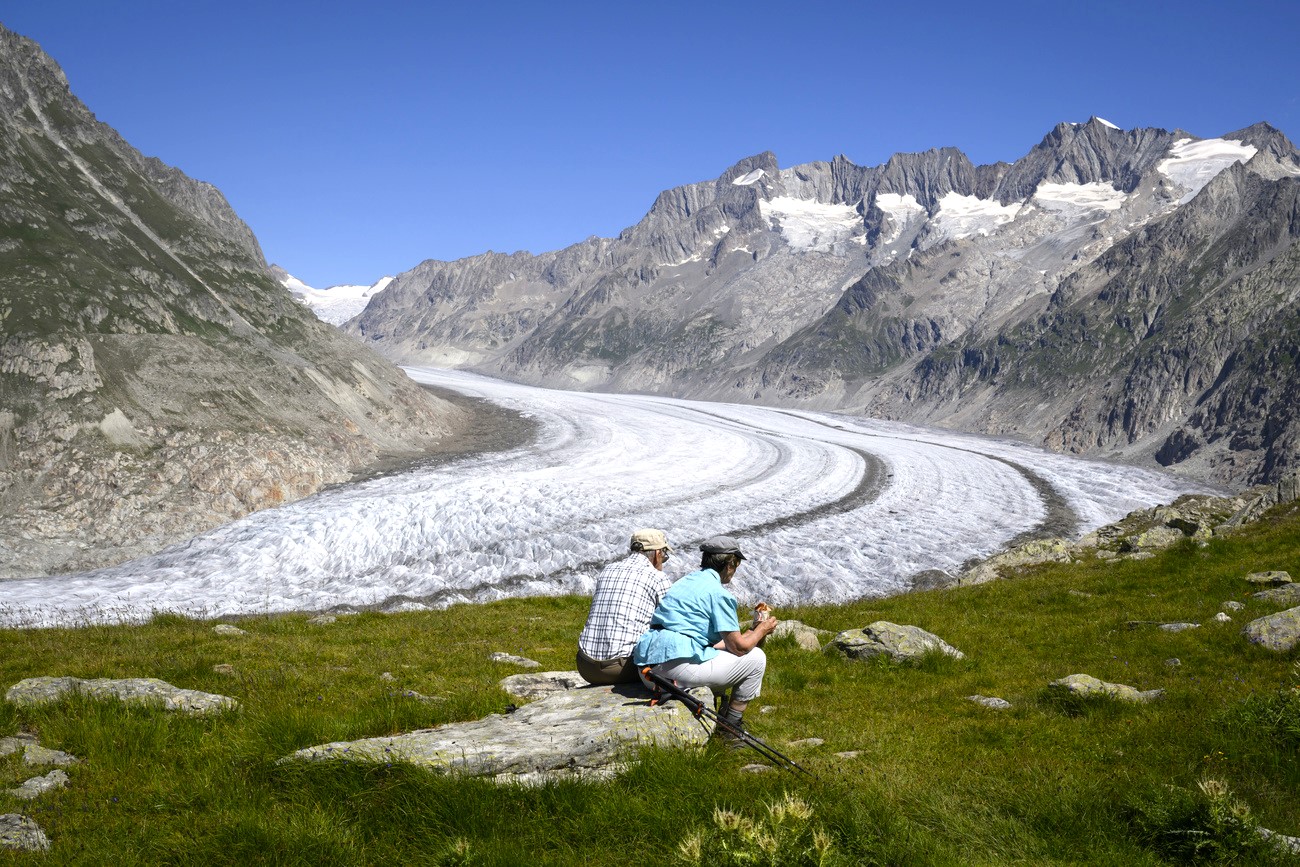
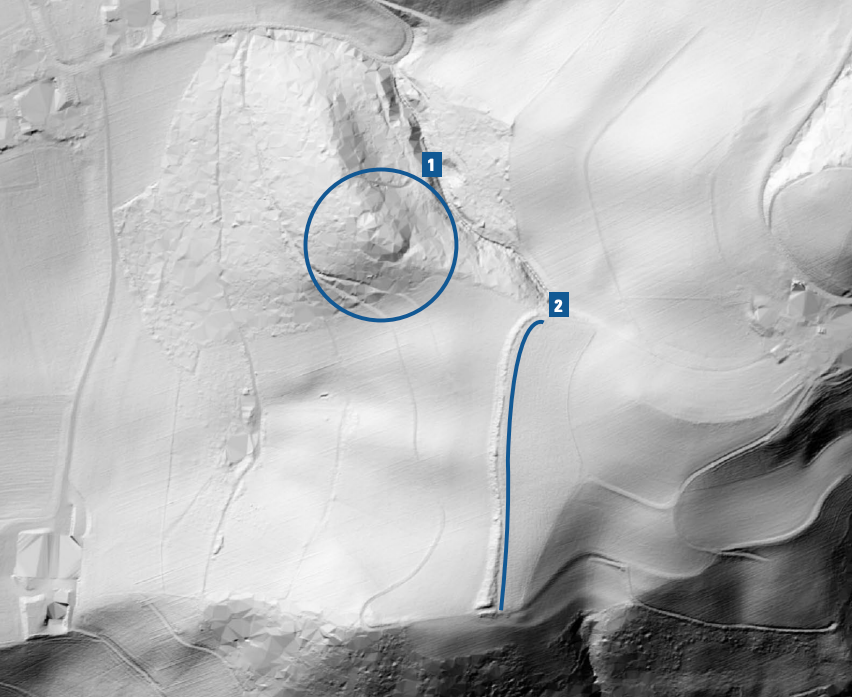





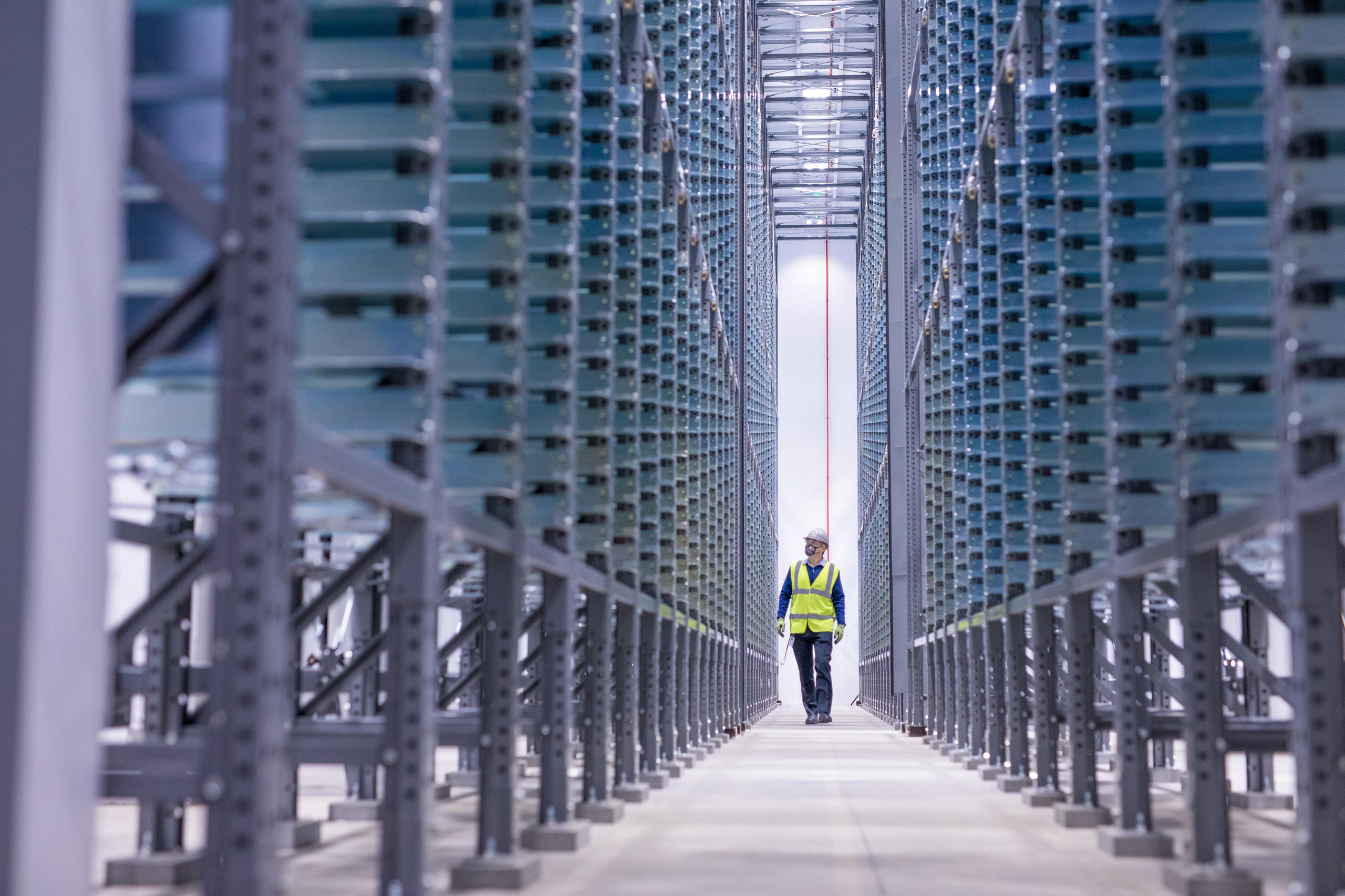
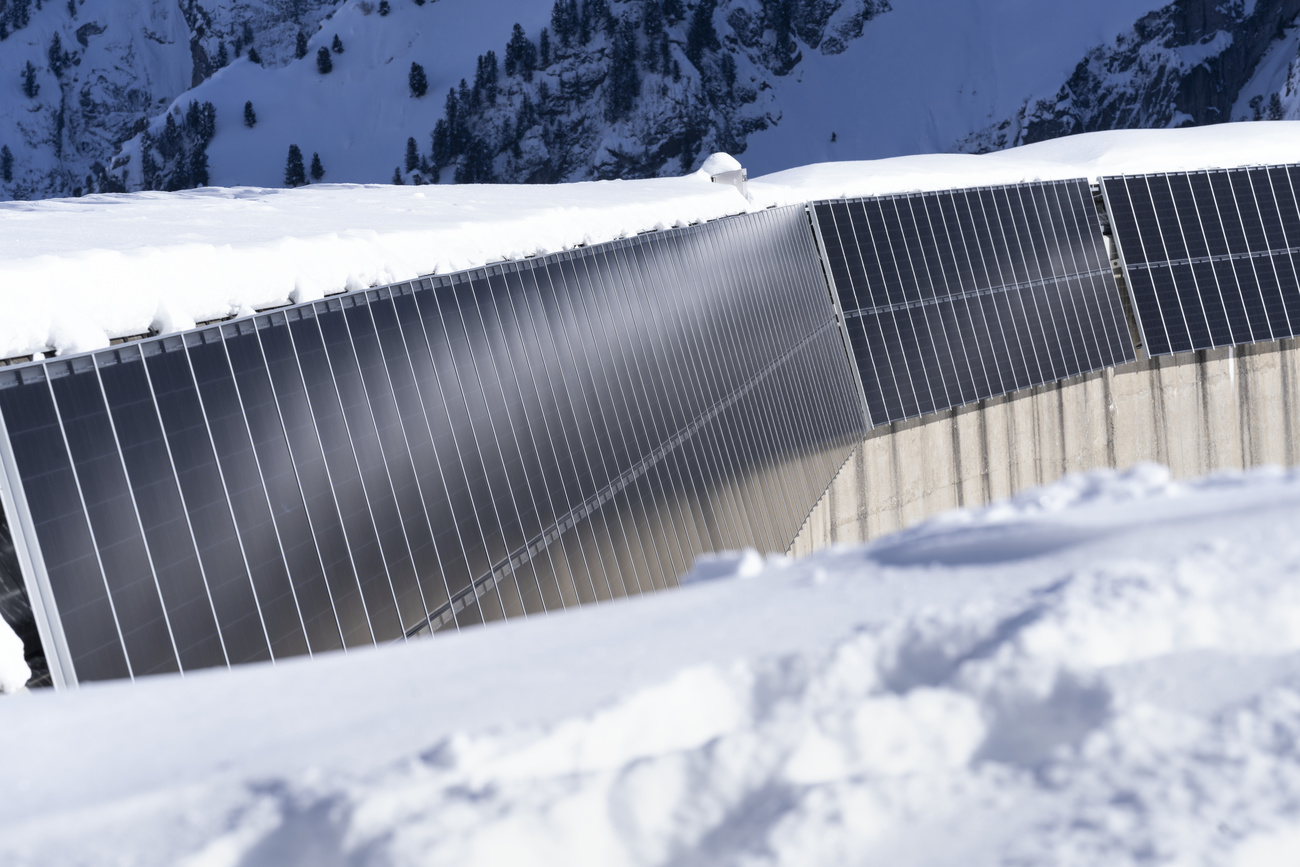
You can find an overview of ongoing debates with our journalists here . Please join us!
If you want to start a conversation about a topic raised in this article or want to report factual errors, email us at english@swissinfo.ch.